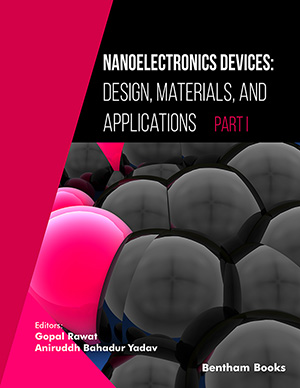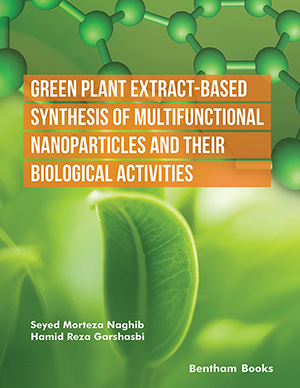Abstract
Introduction: A facile approach for producing graphene nanosheets (GNs) has been established by reducing graphene oxide (GO) with ginger extract (GEx) at low temperature. The elimination of oxygen characteristics from GO has been validated by a Raman study.
Method: FTIR analysis also supports the Raman signatures of the removal of oxygen species from the carbon core. Surface analysis confirms the remarkable deoxidation of GO and settles the production of GNs. After that, synthesized GNs were tested for their capability to photodegrade Methylene blue (MB) dye under visible and UV (both 125 W) light.
Result: At low concentrations (0.5 mg), GNs are an effective photocatalyst for the degradation of MB, with a maximum degradation efficiency of 91.84% in 45 minutes when exposed to UV light irradiation.
Conclusion: Results favor that the GEx provides a potential substitute for toxic or harmful reducing agents for the ecologically sustainable production of GNs on a mass scale and synthesized GNs act as an excellent photocatalyst against MB.
Keywords: Graphene nanosheets, green reduction, Methylene blue, photocatalytic activity, zingiber officinalis, reducing agents.
[http://dx.doi.org/10.1016/j.inoche.2020.107924]
[http://dx.doi.org/10.1038/natrevmats.2016.18]
[http://dx.doi.org/10.1038/s41545-018-0004-z]
[http://dx.doi.org/10.1038/s41598-018-19978-8] [PMID: 29379045]
[http://dx.doi.org/10.1155/2019/9872502]
[http://dx.doi.org/10.1016/j.carbon.2013.06.035]
[http://dx.doi.org/10.1038/nature11458] [PMID: 23060189]
[http://dx.doi.org/10.2174/1876402911204030180]
[http://dx.doi.org/10.2174/1385272819666150526010249]
[http://dx.doi.org/10.1021/acs.analchem.0c03664] [PMID: 33237743]
[http://dx.doi.org/10.1039/D1NR07643D] [PMID: 35244647]
[http://dx.doi.org/10.1016/j.snb.2020.128695]
[http://dx.doi.org/10.1016/S1369-7021(12)70044-5]
[http://dx.doi.org/10.1016/j.apsusc.2014.02.036]
[http://dx.doi.org/10.1039/c3ra43025a]
[http://dx.doi.org/10.1021/ja902348k] [PMID: 19601624]
[http://dx.doi.org/10.1166/graph.2015.1060]
[http://dx.doi.org/10.1021/nn1002387] [PMID: 20359169]
[http://dx.doi.org/10.3390/jcs6020058]
[http://dx.doi.org/10.1039/C6RA19111H]
[http://dx.doi.org/10.1021/jp100603h]
[http://dx.doi.org/10.1021/ja100938r] [PMID: 20462190]
[http://dx.doi.org/10.1016/j.msec.2015.05.077] [PMID: 26117780]
[http://dx.doi.org/10.5185/amlett.2017.6559]
[http://dx.doi.org/10.1007/s11706-023-0642-z]
[http://dx.doi.org/10.1016/j.chemosphere.2022.136934] [PMID: 36273614]
[http://dx.doi.org/10.1039/D2TA08576C]
[http://dx.doi.org/10.1080/10408391003698669] [PMID: 21929329]
[http://dx.doi.org/10.1002/biof.552210157] [PMID: 15630214]
[http://dx.doi.org/10.1016/j.foodchem.2006.06.023]
[http://dx.doi.org/10.1007/s12039-016-1128-7]
[http://dx.doi.org/10.1021/ja01539a017]
[http://dx.doi.org/10.2174/2452273201666170321163529]
[http://dx.doi.org/10.1038/s41598-018-30613-4] [PMID: 30104689]
[http://dx.doi.org/10.1088/2053-1591/aa5776]
[http://dx.doi.org/10.1007/s12032-017-0931-4] [PMID: 28349496]
[http://dx.doi.org/10.1016/j.physe.2018.05.020]
[http://dx.doi.org/10.1111/jace.18946]
[http://dx.doi.org/10.1016/j.apsusc.2022.154977]
[http://dx.doi.org/10.1007/978-1-4615-8705-7]
[http://dx.doi.org/10.1021/jz300096t] [PMID: 26286560]
[http://dx.doi.org/10.1016/j.carbon.2015.06.013]
[http://dx.doi.org/10.1038/srep01929] [PMID: 23722643]
[http://dx.doi.org/10.1038/s41598-018-24066-y] [PMID: 29632316]
[http://dx.doi.org/10.1016/j.arabjc.2018.12.001]
[http://dx.doi.org/10.1016/j.jksus.2021.101438]
[http://dx.doi.org/10.1039/C9RA05793E] [PMID: 35542257]
[http://dx.doi.org/10.21474/IJAR01/3526]
[http://dx.doi.org/10.1016/j.apsusc.2021.149663]
[http://dx.doi.org/10.3390/ma13040824] [PMID: 32054129]
[http://dx.doi.org/10.1016/j.jallcom.2020.155746]
[http://dx.doi.org/10.1039/c2cy20023f]
[http://dx.doi.org/10.1039/C5RA13689J]
[http://dx.doi.org/10.1016/j.inoche.2021.108630]
[http://dx.doi.org/10.1039/D3RA00698K] [PMID: 37033429]
[http://dx.doi.org/10.1016/j.apsusc.2017.05.028]
[http://dx.doi.org/10.1039/D2DT02978B] [PMID: 36399031]
[http://dx.doi.org/10.1080/17458080.2016.1144937]
[http://dx.doi.org/10.1039/c0jm03827j]
[http://dx.doi.org/10.1016/j.optmat.2022.113364]
[http://dx.doi.org/10.1039/D3CY00278K]

























